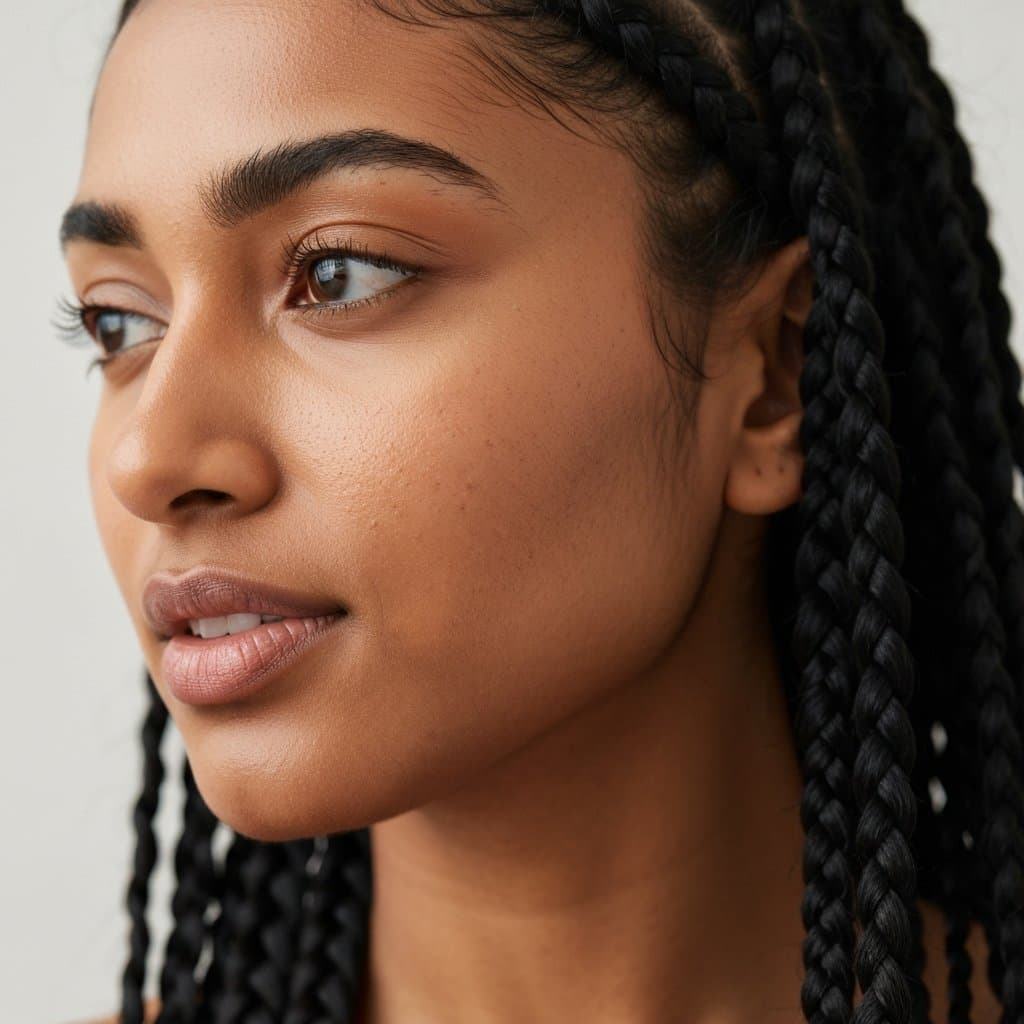Crimped Waves: The 90s Trend Reimagined for 2025
Crimped Waves: The 90s Trend Reimagined for 2025
How the Iconic Zigzag Texture is Making a Sophisticated Comeback in Modern Hairstyling
The unmistakable zigzag texture of crimped hair is experiencing an unexpected renaissance, transforming from a nostalgic 90s memory into one of 2025's most innovative styling techniques. Once synonymous with teenage rebellion and MTV music videos, crimped waves have undergone a sophisticated evolution that speaks to modern sensibilities while honoring their retro roots. Today's crimped waves are less about creating a uniform sheet of zigzag hair and more about strategic texture, controlled volume, and artistic expression that enhances rather than overwhelms your overall look.
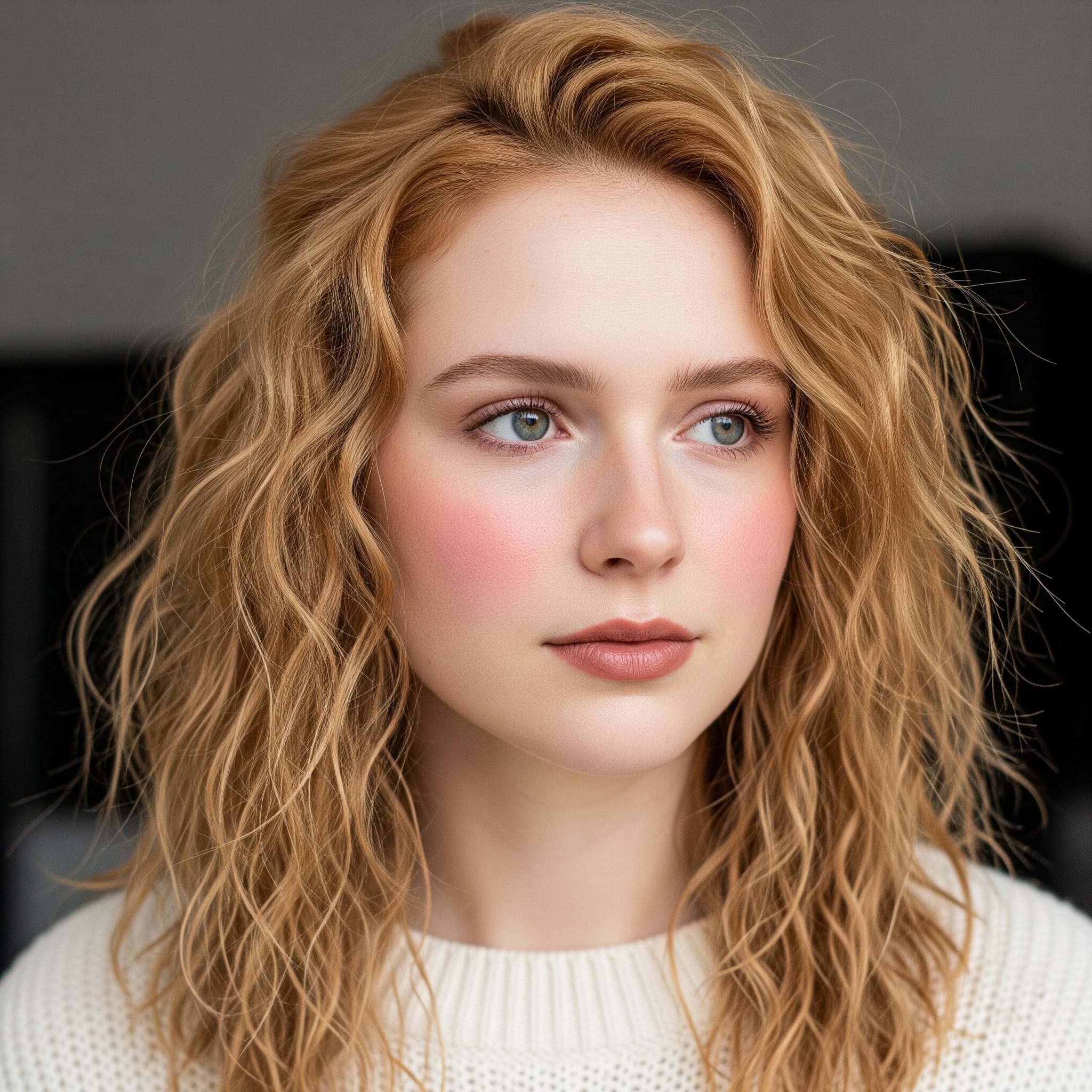
The History and Evolution of Crimped Hair: From 90s Staple to Modern Statement
Crimped hair burst onto the fashion scene in the late 1980s and dominated throughout the 1990s, becoming an iconic symbol of the era's bold, experimental approach to beauty. The style originated from the desire to create maximum volume and texture in an age when bigger truly meant better. Celebrities like Christina Aguilera, Gwen Stefani, and members of Destiny's Child made crimped hair a red carpet staple, often pairing the dramatic texture with equally bold makeup and fashion choices that defined the decade's aesthetic.
The original crimping technique involved specialized crimping irons with zigzag plates that pressed hair into sharp, angular waves. The result was a dramatic increase in hair volume and a distinctive texture that couldn't be achieved through any other styling method. During its heyday, crimped hair was often styled from root to tip, creating an all-over textured effect that could double or even triple the appearance of hair volume. This maximalist approach perfectly captured the experimental spirit of 90s fashion and beauty.
As fashion moved into the 2000s, crimped hair gradually fell out of favor, dismissed as dated and associated with fashion faux pas. The sleek, straight hair trends of the early 2000s and the beachy waves of the 2010s seemed to seal crimping's fate as a relic of the past. However, fashion's cyclical nature and the current obsession with 90s nostalgia have brought crimped waves back into the spotlight, albeit with significant modern updates that make the style relevant for contemporary aesthetics.

Understanding Modern Crimped Waves: What's Different in 2025
Today's approach to crimped waves is fundamentally different from its 90s predecessor, focusing on sophistication and wearability rather than shock value. Modern crimped waves incorporate the texture strategically, often combining crimped sections with smooth or naturally wavy pieces to create dimension and interest without overwhelming the overall hairstyle. This selective crimping technique allows for customization based on face shape, hair type, and personal style preferences.
The 2025 interpretation of crimped waves emphasizes subtlety and refinement. Instead of crimping entire heads of hair, contemporary stylists use crimping as a texturizing technique to add volume at the roots, create interesting patterns within updos, or provide grip for braided styles. The crimped texture might appear only in the under layers of hair to provide lift without visible zigzag patterns, or it might be featured as an accent in specific sections to create visual interest and movement.
The tools and techniques have also evolved significantly. While traditional crimping irons are still available, modern stylists often achieve crimped effects through alternative methods like braiding damp hair, using wave formers, or employing flat irons with specialized plates. These updated techniques create softer, more organic-looking crimped textures that blend seamlessly with natural hair movement. The harsh, uniform zigzag of the 90s has given way to varied textures that look intentional yet effortless.
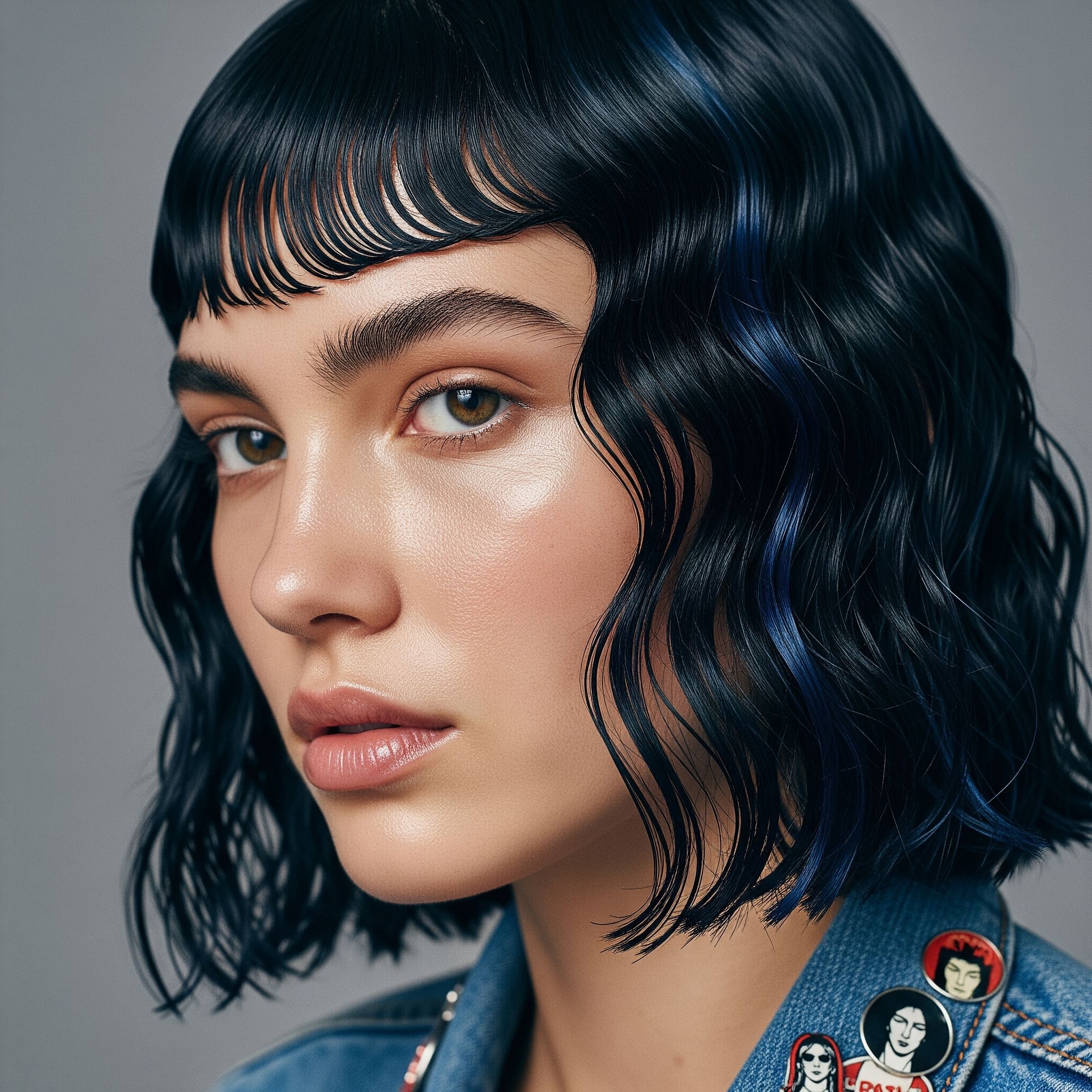
Essential Tools and Products for Creating Modern Crimped Waves
Creating contemporary crimped waves requires a thoughtful selection of tools that can deliver various levels of texture and control. The modern crimping iron has evolved from its 90s ancestor, now featuring adjustable temperature settings, ceramic or tourmaline plates for even heat distribution, and various plate sizes to create different crimped effects. Smaller plates create tighter, more defined crimps, while larger plates produce softer, wave-like textures that suit the modern aesthetic.
For those seeking alternatives to traditional crimping irons, flat irons with interchangeable plates offer versatility and control. Some innovative styling tools now feature crimping attachments that can be swapped with straightening plates, allowing you to create multiple textures with a single device. Triple barrel wavers have also gained popularity as they create a crimped-adjacent texture that's softer and more romantic than traditional crimping while still providing significant volume and texture.
Product selection is crucial for achieving modern crimped waves that last without looking stiff or dated. Start with a volumizing mousse or root lift spray applied to damp hair before blow-drying. These products provide the foundation for long-lasting crimped texture while protecting hair from heat damage. A heat protectant spray is non-negotiable, especially since crimping requires direct heat application to small sections of hair. Look for formulas that protect up to 450°F and contain moisturizing ingredients to prevent the dryness often associated with heat styling.
Texturizing products play a vital role in modernizing crimped waves. Sea salt sprays, texture powders, and grip-enhancing products help create that perfectly imperfect finish that distinguishes 2025's crimped waves from their 90s predecessors. Finishing products should provide flexible hold without stiffness – opt for workable hair sprays, texture-enhancing mists, or lightweight oils that add shine without weighing down the crimped texture.

Step-by-Step Guide: Creating Contemporary Crimped Waves
Begin your modern crimped wave journey with freshly washed hair, using a clarifying shampoo to remove any product buildup that might interfere with the crimping process. Follow with a lightweight conditioner, focusing on the mid-lengths and ends while avoiding the roots to maintain volume potential. Towel dry gently and apply a heat protectant throughout your hair, ensuring complete coverage from roots to tips.
Blow-dry your hair completely using a round brush to create initial volume and smoothness. This step is crucial – crimping damp hair can cause damage and won't produce lasting results. Once your hair is thoroughly dry, section it strategically based on your desired outcome. For modern crimped waves, consider crimping only the bottom two-thirds of your hair, leaving the top layer smooth for a more sophisticated appearance. Alternatively, create a checkerboard pattern by crimping alternating sections for a subtle textured effect.
Set your crimping iron to the appropriate temperature for your hair type – fine hair requires lower heat (around 300°F), while thick, coarse hair may need temperatures up to 400°F. Working with one-inch sections, place the crimping iron at the root and hold for 3-5 seconds before releasing and moving down the hair shaft. The key to modern crimping is varying the pressure and timing – don't crimp every section identically. Some areas should have more defined crimps while others remain softer, creating natural-looking variation.
After crimping your desired sections, allow your hair to cool completely before styling. This cooling period sets the crimp pattern and ensures longevity. Once cooled, use your fingers to gently separate and fluff the crimped sections, breaking up any overly uniform patterns. For a truly modern finish, run a flat iron lightly over some crimped pieces to create a mixed-texture effect, or twist random sections to soften the zigzag pattern into more organic waves.
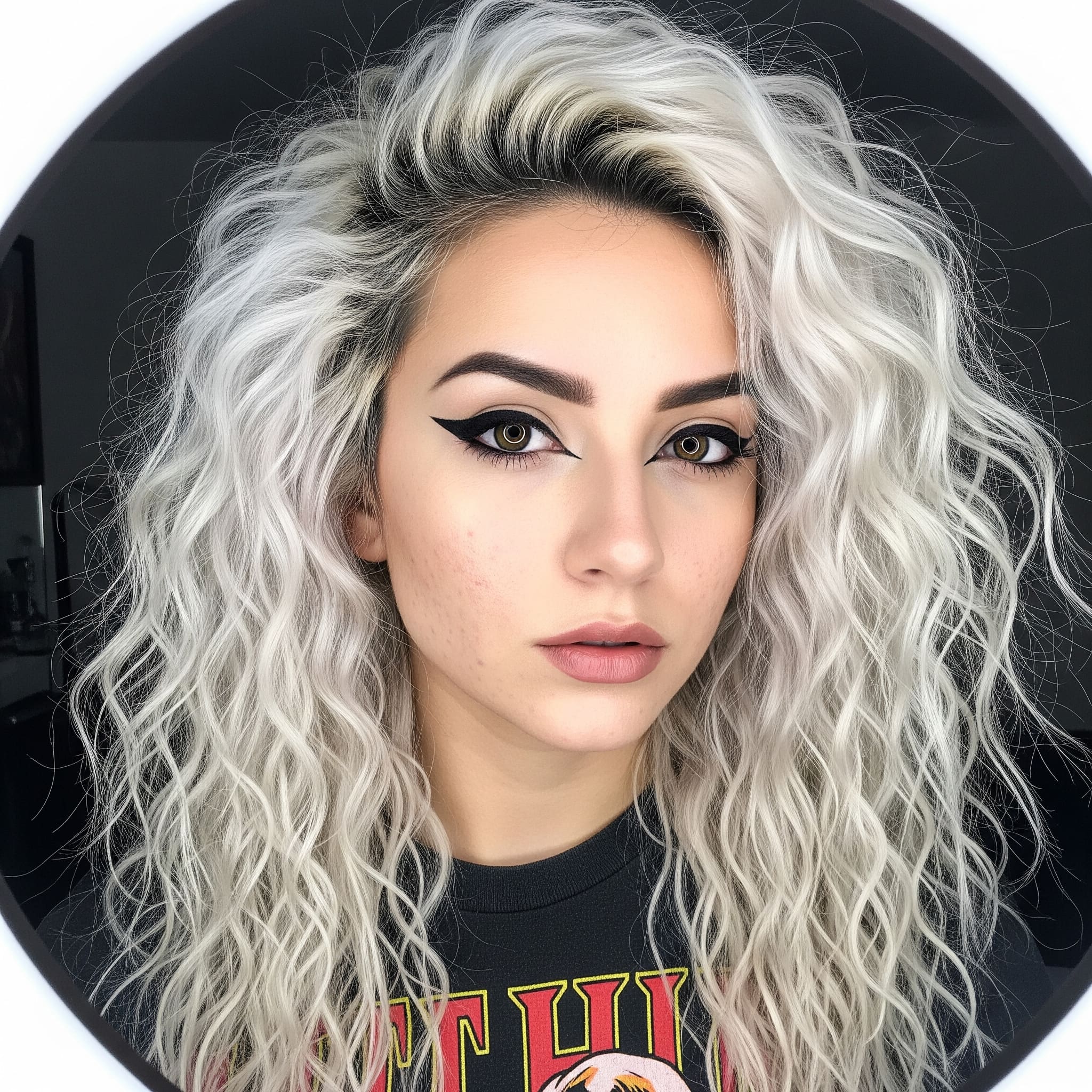
Styling Variations: Modern Ways to Wear Crimped Waves
The half-crimped style has emerged as one of the most popular modern interpretations of this classic technique. This approach involves crimping only the lower layers of hair while keeping the top smooth and sleek. The result is subtle volume and texture that's visible in movement but doesn't overwhelm the overall look. This technique works particularly well for those with fine hair who want to add body without the full commitment to all-over crimping.
Face-framing crimped waves offer another contemporary take on the trend. By crimping only the sections around the face and leaving the rest of the hair natural or smoothly styled, you create an interesting contrast that draws attention to facial features. This selective crimping can be particularly flattering for round faces, as the added texture creates angles and dimension. The technique also works beautifully with curtain bangs, adding volume and movement to the face-framing layers.
The crimped crown technique focuses texture at the roots and crown area to create dramatic lift and volume. This modern approach involves crimping small sections at the roots, then covering them with smooth hair for invisible volume support. It's particularly effective for updos and ponytails, providing the structure needed for voluminous styles without visible crimping. This hidden crimping technique has become a secret weapon for hairstylists creating red carpet looks that require serious staying power.
Mixed-texture styling combines crimped waves with other textures for a truly contemporary effect. Alternate between crimped sections, loose waves, and straight pieces to create a complex, multidimensional style that feels fresh and modern. This approach works particularly well for special events or editorial styling, where the goal is to create visual interest and showcase technical skill while maintaining wearability.

Adapting Crimped Waves for Different Hair Types and Lengths
Fine hair can benefit tremendously from modern crimping techniques, as the zigzag texture creates instant volume and the illusion of fuller, thicker hair. For fine hair, focus on crimping the underneath layers and roots to create lift without weighing down the delicate strands. Use a lower heat setting and avoid heavy products that might flatten the crimped texture. Dry shampoo becomes an essential ally, helping maintain volume and texture while absorbing excess oils that can deflate fine, crimped hair.
Thick, coarse hair requires a different approach to achieve modern crimped waves. The natural weight and density of thick hair can actually work against traditional crimping, causing the texture to fall flat quickly. Combat this by working in very small sections and using higher heat settings to ensure the crimp pattern truly sets. Consider crimping only select sections for textural interest rather than attempting to crimp the entire head. Focus on creating contrast between smooth and crimped sections to prevent the style from becoming overwhelming.
Curly and textured hair types can incorporate crimped waves as a way to temporarily alter their natural pattern and create unique styles. Start by smoothing the hair with a blow dryer and brush to create a uniform base, then apply crimping techniques selectively. The combination of natural texture and crimped sections can create stunning visual effects that celebrate hair's versatility. Always use extra moisture and heat protection, as textured hair is often more fragile and prone to damage from heat styling.
Short hair and bob lengths can absolutely rock modern crimped waves, though the approach differs from longer styles. Focus on creating subtle crimped texture at the roots for volume, or crimp individual sections to create piece-y, textured effects. Asymmetrical crimping – where one side features more texture than the other – can add edge and interest to shorter styles. The key is restraint; a little crimping goes a long way on shorter lengths.
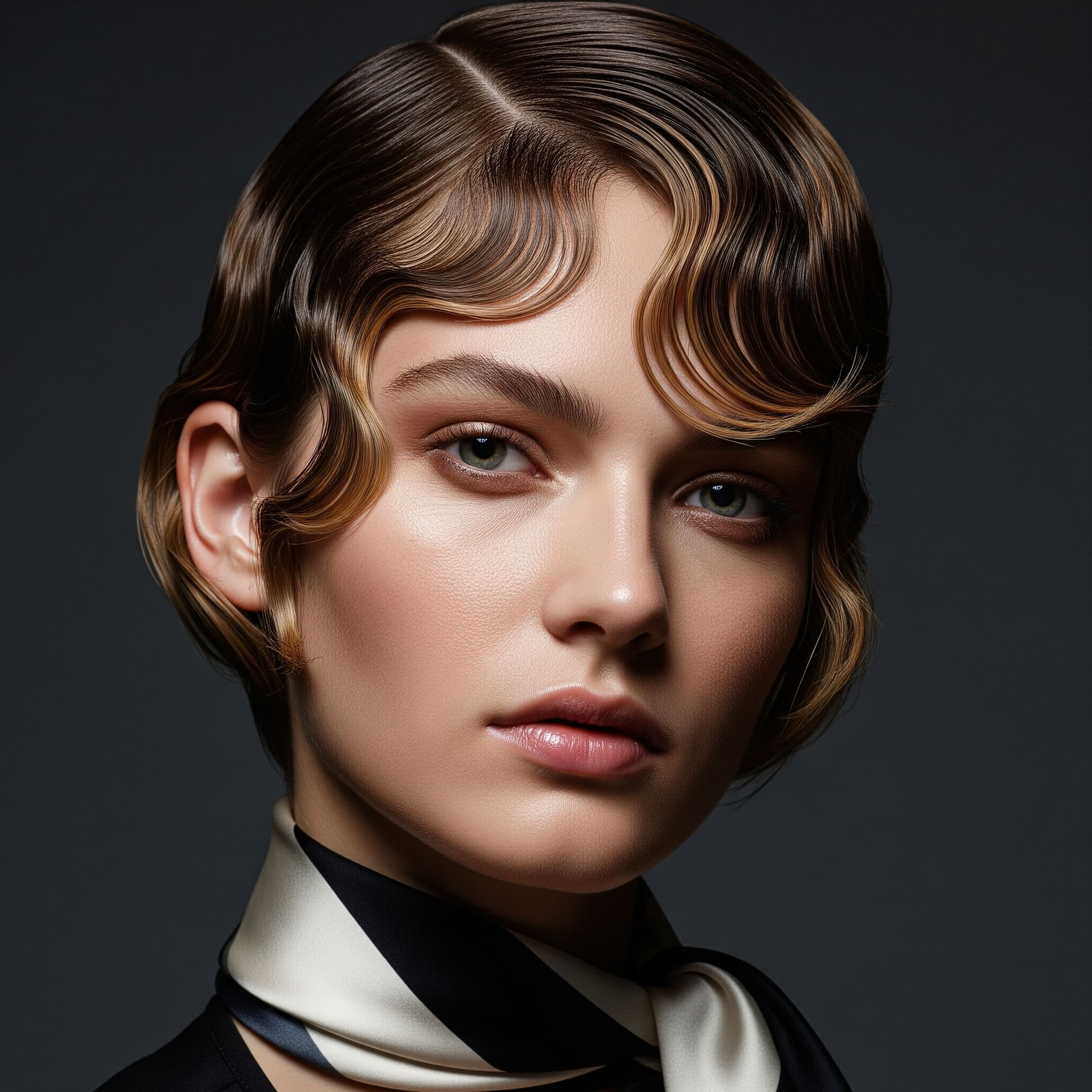
The Color Connection: How Hair Color Enhances Crimped Waves
The relationship between hair color and crimped texture creates opportunities for stunning visual effects that weren't fully explored in the 90s. Multi-dimensional color, such as highlights, lowlights, and balayage, becomes even more prominent when hair is crimped, as the zigzag pattern catches light differently than smooth hair. This interplay between color and texture can make even subtle color variations appear more dramatic and interesting.
Strategic color placement can enhance the modern crimped wave effect. Colorists are now using techniques like "crimp painting," where highlights are placed specifically to accentuate the peaks and valleys of crimped texture. This creates an almost holographic effect as the hair moves, with different colors revealing themselves depending on the angle and lighting. Face-framing highlights combined with crimped texture create a halo effect that brightens the complexion and adds dimension to the overall style.
Bold, fashion colors take on new life when combined with crimped texture. The zigzag pattern creates a unique canvas for displaying vivid hues like electric blue, purple, or pink. The crimped texture actually helps fashion colors appear more dimensional and less flat than they might on straight hair. This has led to a trend of "crimped color reveals," where fashion colors are applied to under layers and revealed through crimped styling.
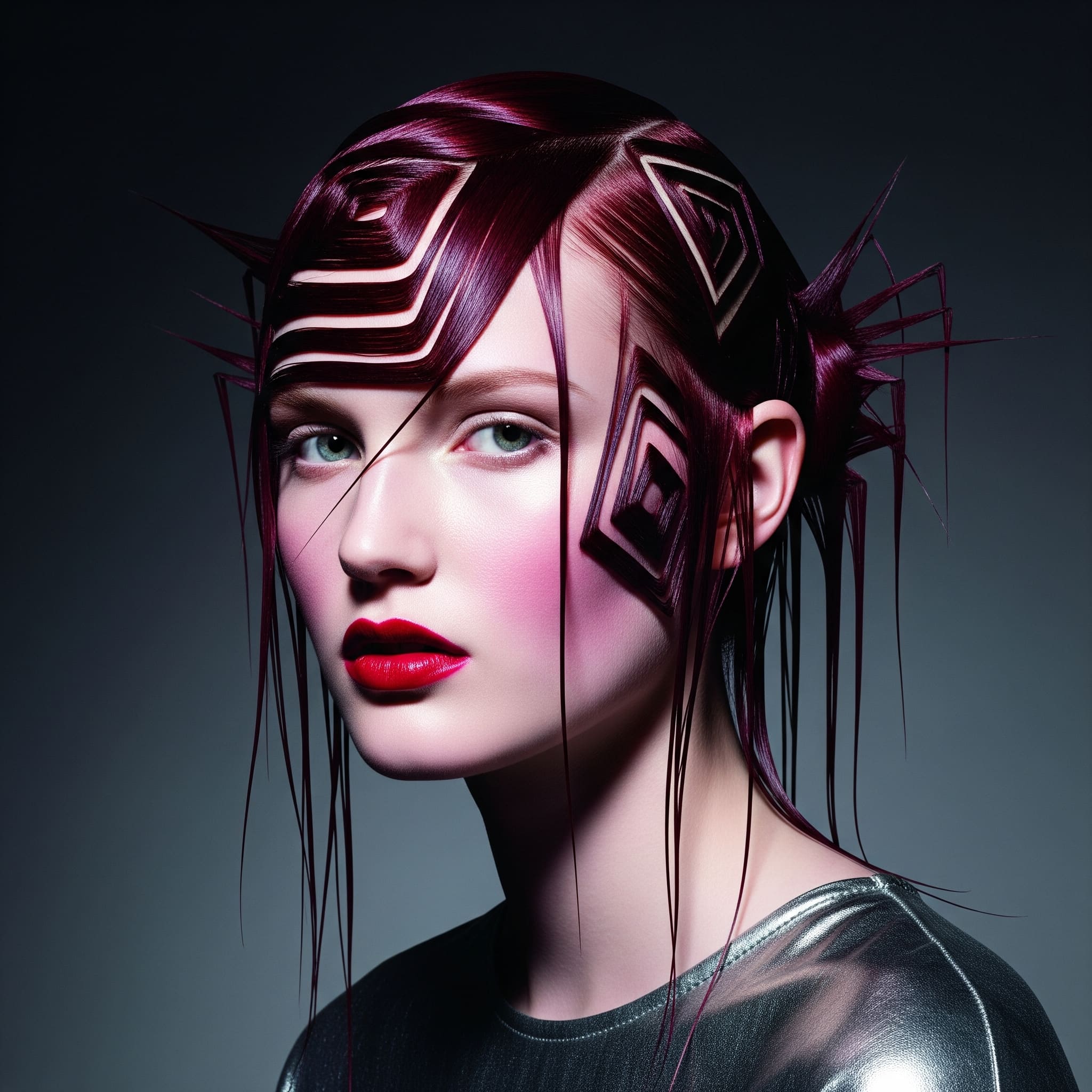
Maintaining and Caring for Crimped Waves
The longevity of crimped waves depends significantly on proper maintenance and care techniques. Unlike naturally occurring textures, crimped waves require intentional preservation to maintain their shape and definition. During the day, avoid excessive touching or brushing, which can disrupt the crimp pattern and create frizz. If you need to refresh your crimped waves, use a texturizing spray and gently squeeze sections to revive the zigzag pattern without adding more heat.
Sleeping with crimped waves requires strategic protection to prevent flattening and tangling. The pineapple method, traditionally used for curly hair, works well for preserving crimped texture overnight. Loosely gather your hair at the very top of your head with a silk scrunchie, allowing the crimped sections to fall freely without being compressed. A silk or satin pillowcase reduces friction and helps maintain the crimp pattern while preventing frizz and tangles.
Deep conditioning treatments are essential for hair that's regularly crimped, as the heat styling process can lead to dryness and damage over time. Incorporate weekly hair masks focusing on moisture and protein balance to maintain hair health. Look for treatments containing ingredients like keratin, argan oil, and coconut oil that penetrate the hair shaft and repair heat damage. Regular trims every 6-8 weeks prevent split ends from traveling up the hair shaft and compromising the appearance of your crimped waves.
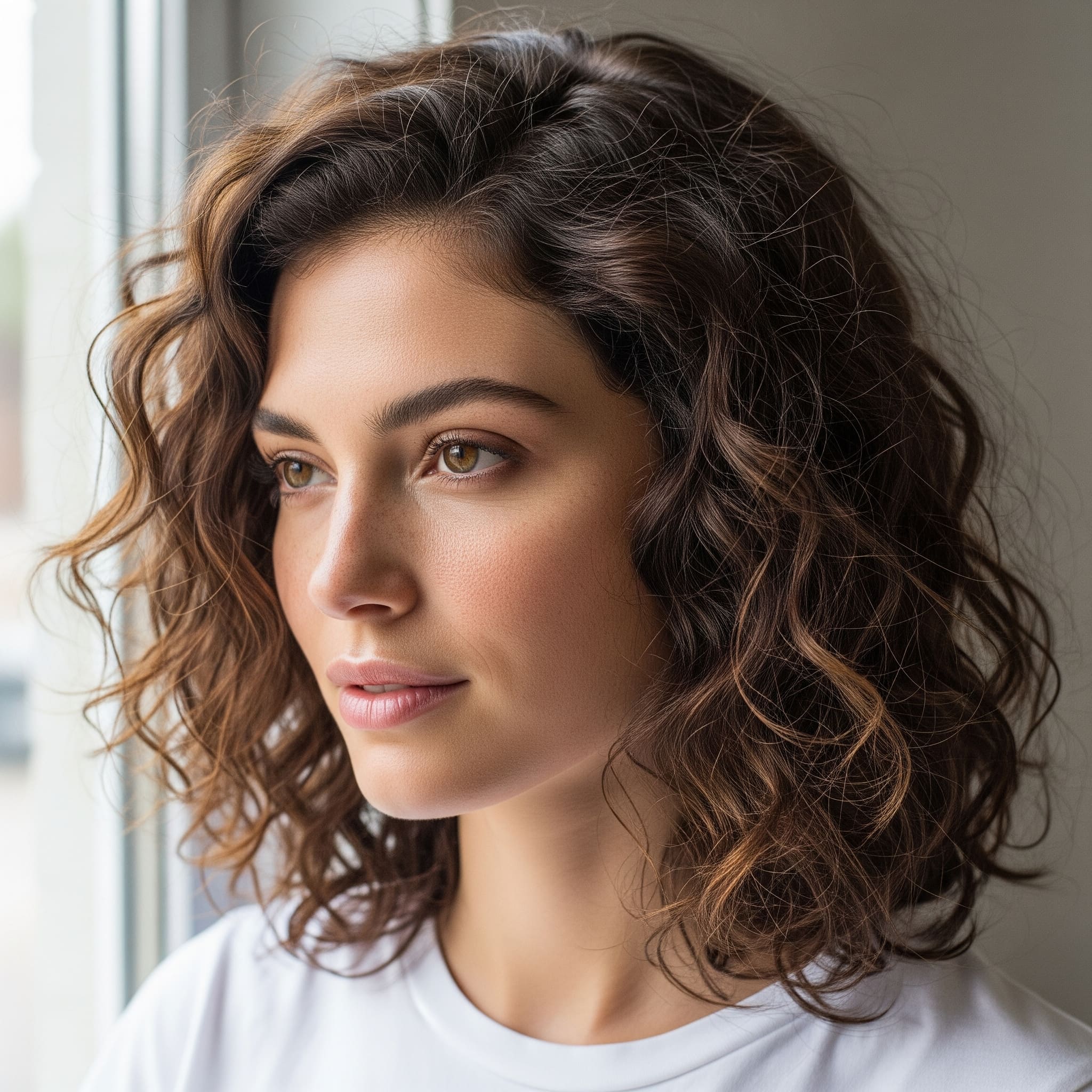
Common Mistakes and How to Avoid Them
One of the biggest mistakes when creating modern crimped waves is over-crimping, which results in that dated 90s look rather than a contemporary style. Avoid crimping your entire head of hair uniformly; instead, focus on strategic placement and varying textures. Remember that modern crimped waves are about enhancing your style, not overwhelming it. Less is often more when it comes to achieving a sophisticated, wearable look.
Using excessive heat or incorrect temperature settings can damage hair and create crimps that look fried rather than fabulous. Always start with the lowest effective temperature for your hair type and increase gradually if needed. Fine or damaged hair should never exceed 350°F, while thicker hair should stay below 400°F. Skipping heat protectant is never worth the risk – the damage caused by unprotected crimping can take months to repair.
Neglecting to prep hair properly before crimping leads to disappointing results that don't last. Hair must be completely clean and dry before crimping; any moisture, product buildup, or oil can prevent the crimp from setting properly. Similarly, using too much product before crimping can cause the hair to steam and sizzle, leading to damage and poor results. Start with minimal product and add more after crimping if needed.
Expecting crimped waves to last for days without proper maintenance sets you up for disappointment. While crimped texture typically lasts longer than curls, it still requires care to maintain its appearance. Refresh your style daily with appropriate products and techniques, and be prepared to re-crimp certain sections if they lose their texture. Understanding that crimped waves are a high-maintenance style helps set realistic expectations.
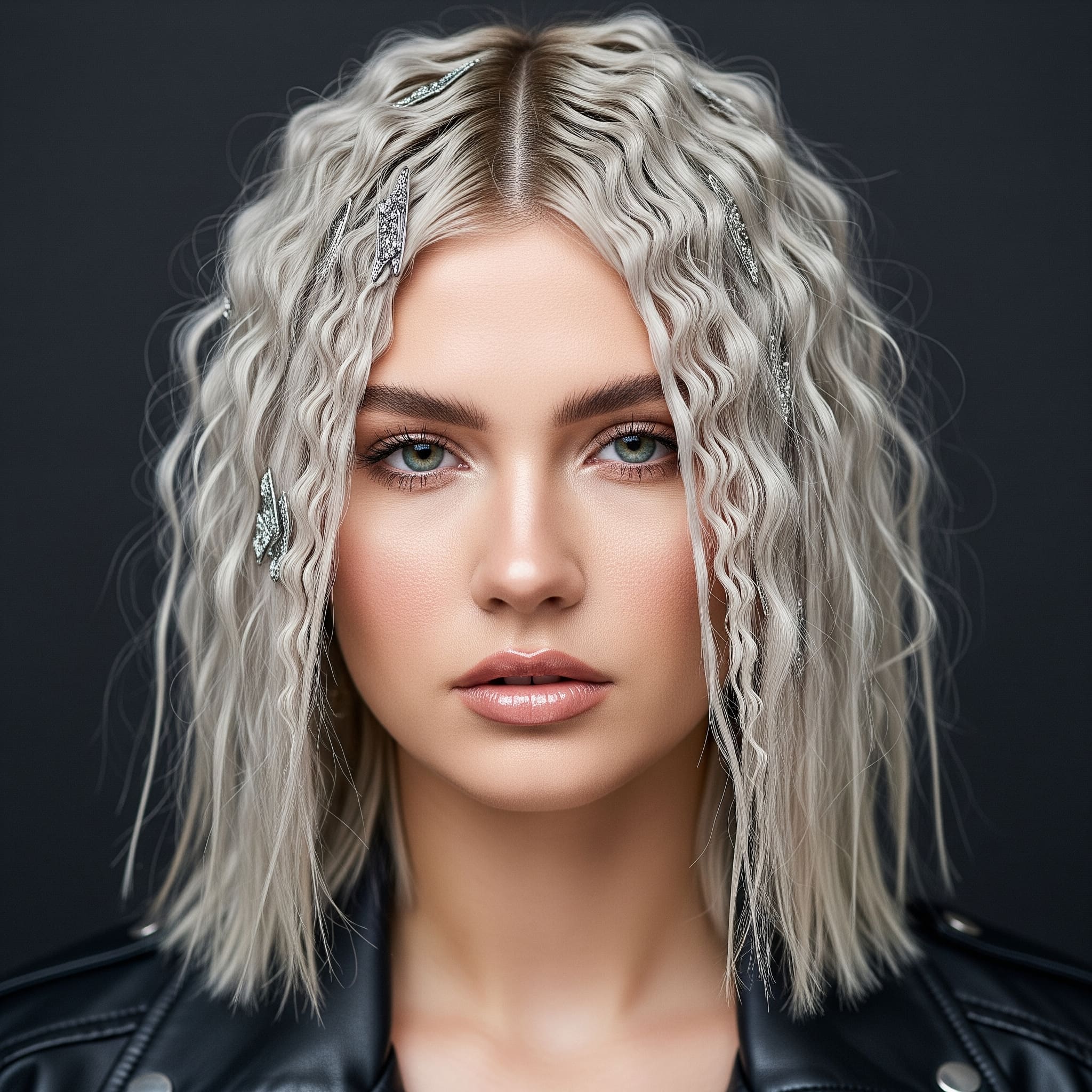
The Future of Crimped Waves: Trends and Predictions
As we move further into 2025, crimped waves continue to evolve with new techniques and applications emerging regularly. The trend toward "micro-crimping" – creating tiny, barely visible crimps for texture without obvious zigzag patterns – is gaining traction among those who want the benefits of crimping without the bold statement. This subtle approach works particularly well in professional settings where dramatic hair might be inappropriate.
Technology is also shaping the future of crimped waves. New styling tools featuring smart heat technology, customizable crimp patterns, and even app connectivity are making it easier to achieve perfect crimped waves at home. These innovations allow for precise temperature control and consistent results, reducing the risk of damage while improving styling outcomes.
The integration of crimped waves into protective styling and sustainable beauty practices represents another evolution of the trend. Stylists are developing techniques to create crimped effects without heat, using braiding, twisting, and setting methods that achieve similar results with less damage. This aligns with the growing movement toward hair health and natural beauty, proving that crimped waves can adapt to changing beauty philosophies.
Conclusion: Embracing the Crimped Wave Renaissance
The resurrection of crimped waves proves that no trend truly dies – it simply evolves to meet contemporary needs and aesthetics. Today's crimped waves bear little resemblance to their 90s ancestors, having transformed from a one-dimensional statement style into a versatile texturing technique that enhances modern hairstyling. This evolution demonstrates the beauty industry's ability to reimagine and refine past trends, creating something both nostalgic and entirely new.
Whether you're drawn to crimped waves for their volume-boosting properties, their textural interest, or their nostalgic appeal, the modern interpretation offers something for everyone. The key to successfully wearing crimped waves in 2025 is understanding that they're a tool in your styling arsenal rather than a complete look in themselves. By incorporating crimped texture strategically and combining it with contemporary styling techniques, you can create looks that feel fresh, relevant, and uniquely your own.
As crimped waves continue to evolve, they remind us that beauty trends are cyclical but never repetitive. Each revival brings new perspectives, techniques, and interpretations that reflect our current values and aesthetics. The crimped waves of 2025 celebrate individuality, creativity, and the joy of experimentation – values that transcend any particular trend or era. So whether you're a 90s kid reliving your youth or a newcomer to the crimped wave phenomenon, there's never been a better time to explore this textured, voluminous, and endlessly adaptable style.

